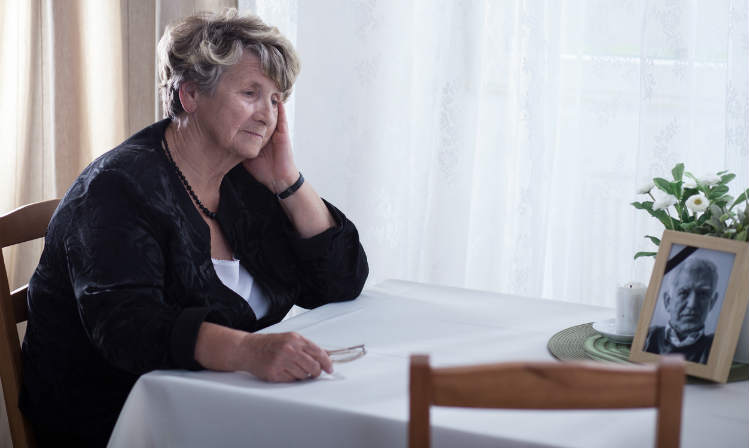Arranging a funeral without a funeral director
It is often assumed funerals can be arranged only with the services of a funeral director. Some people, however, find great comfort from being involved partly or totally, in the arrangements for the funeral of a loved one, they can also be less expensive.
If you wish to arrange a funeral yourself, the only legal requirement is that the death must be certified and registered, and the body must be either buried or cremated.

What to do when the death occurs
If the deceased dies at home, contact the General Practitioner (GP) who attended the deceased during the last illness. The GP will confirm the death and issue a certificate stating the cause, sometimes you may have to collect the certificate from the surgery.
If the death occurs in hospital, normally, the doctor attending will issue the certificate to you or the administrator at the hospital. It is important that you advise the GP’s as soon as possible if it is to be a cremation as the relevant forms will have to be sorted. When a death occurs and the doctor attending is unable to state the cause of death, or where the doctor has not recently attended the deceased, then the Coroner will be informed.
Registering the death
The next of kin or the person arranging the funeral must take the certificate issued by the doctor to the Registrar of Births and Deaths within five days from death. Make sure you telephone first to make an appointment.
When you register the death, make sure that all the details are given fully and correctly, as it is very difficult getting any changes made later. It is also advisable to obtain extra copies of the death certificate at this time in order to be able to claim the deceased’s assets at a later date.
If the Coroner has been involved, and an inquest is to be held, then the Coroner will issue a form to the registrar and allow the cremation to proceed by issuing a Form E for cremation (yellow certificate) or issue a Coroner’s Order for Burial (buff coloured certificate).
When an inquest is not held, the nearest surviving relative can register the death only when the Coroner has confirmed the cause of death to the Registrar. Visit www.gov.uk/after-a-death/register-the-death for further information.
Statutory Forms
Before any cremation or burial can take place, certain forms are required by law to be submitted to the burial or cremation authority. For more information contact the cemetery and crematorium office, where staff will be more than happy to assist and advise.
Storing the body until the funeral
If the death occurs in hospital, the mortician may agree to keep the body in the hospital mortuary, until the day of the funeral, possibly at no charge.
If the death occurs at home, a local funeral director may agree to provide the mortuary facility only, to help you. In the meantime, the body should be kept in a well ventilated, cool room, ideally for under a week. Wrapped ice could be placed by the body.
Transportation
Where the body has to be removed from a hospital, remember to contact the mortician first and check what documentation is required.
If you intend to use an estate car or van, ensure that the coffin or container you intend to use will fit in. You will need help whenever you have to handle the coffin, so make sure you have at least three people available to help you.
Coffins
The body must be suitably transported to the cemetery or crematorium in a container, clearly identifying the name and age of the deceased. The container most commonly used is a standard coffin, made from chipboard with a good quality veneer. Coffins and caskets are available, at a cost, in solid wood which, when used for burial, will last longer in the ground than chipboard.
Environmentally friendly coffins
Recently, a move towards an environmentally friendly container is becoming popular. A cardboard coffin or casket can now be obtained and decorated in water based colours, if required to personal taste. Howefer, you don’t have to legally use a coffin for a funeral, a shroud is a suitable and affordable alternative. As a rule, if you plan to make your own container, use the smallest size possible to accommodate the deceased but strong enough to hold the weight. If cremation is decided, do not varnish or paint the container in oil paints. The materials used must be such that it minimizes the use of fossil fuels. Clothing containing man made fibres, shoes or rubberised items will cause smoke if cremated and should not be placed in the container. If you are in any doubt please contact the crematorium first.
Including personal items
The crematorium office will advise you on what personal items you can place with the body if you’re thinking of doing this.
The ceremony or service
The chapels at both Crewe and Macclesfield crematoria can be used for a service whether cremation or burial is intended. Contact your local minister to conduct the service or you may prefer a non-religious service. The content of the service is your choice, music can be provided, together with the opportunity to webcast the service for those mourners who are unable to attend.
To book the funeral service you will need to complete forms available from the crematorium which will require the deceased’s details and also preferences for timings and music during the ceremony.
If you require any further information or advice just contact the cemetery and crematorium offices, where staff will be on hand to help. Or if you feel that all of this is too much to take on, why not consider a “direct cremation” instead.